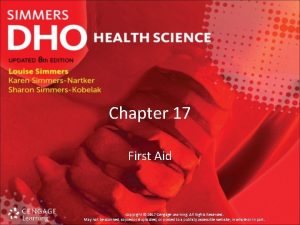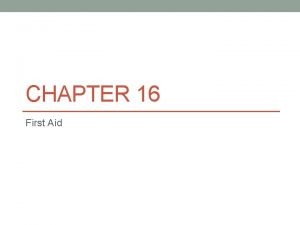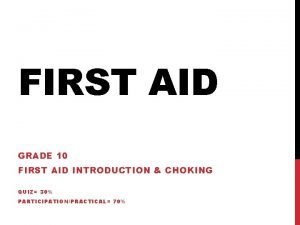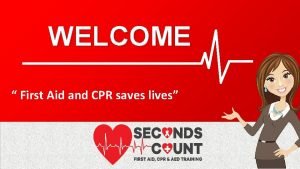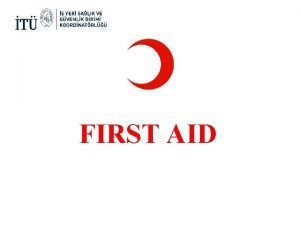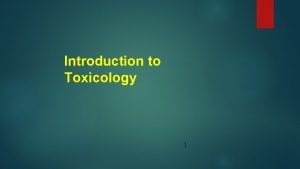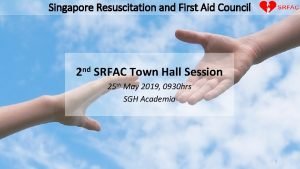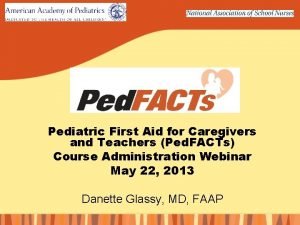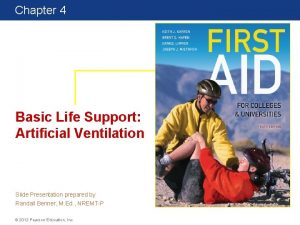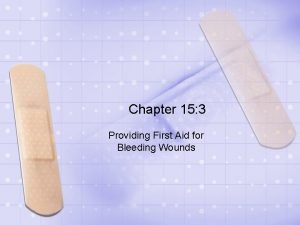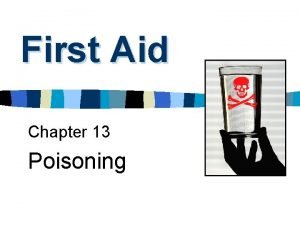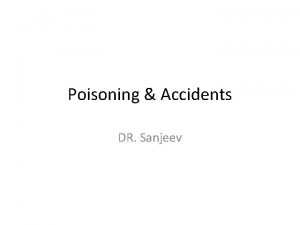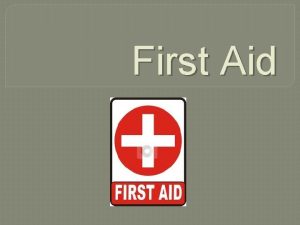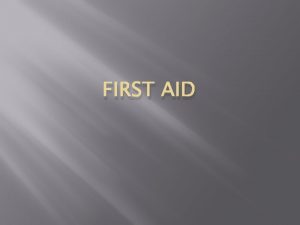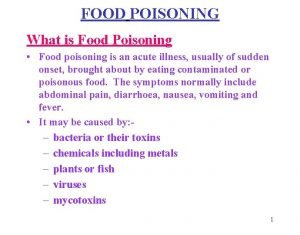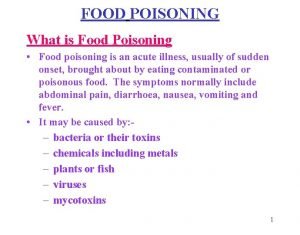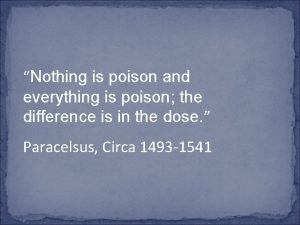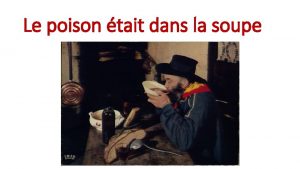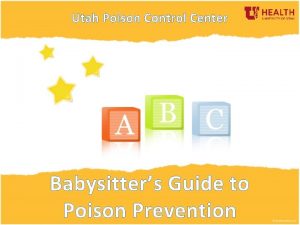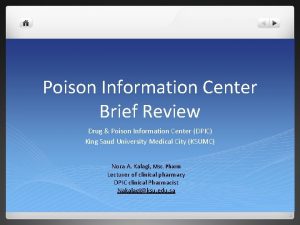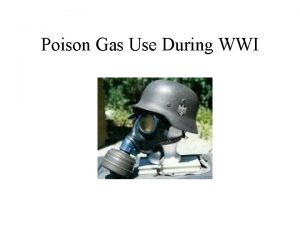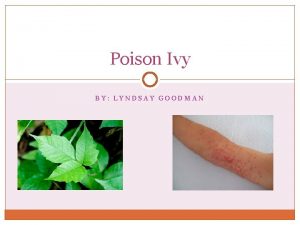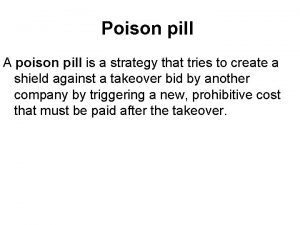First aid of poison and poisoning Definition Poisoning















- Slides: 15

First aid of poison and poisoning Definition Poisoning is caused by swallowing, injecting, breathing in, Most poisonings occur by accident. Immediate first aid is very important in a poisoning emergency. The

Symptoms and Signs Symptoms vary according to the poison, but may include: 1. Abdominal pain and diarrhea. 2. Bluish lips. 3. Chest pain and cough. 4. Difficulty breathing. 5. Fever and headache.

6. Irritability and Loss of appetite. 7. Muscle twitching. 8. Nausea and vomiting. 9. Skin rash or burns. 10. Unconsciousness.

Types of poison In regard to poisoning can be divided into: 1 - Agricultural and industrial chemicals. 2 - Drugs and health care products. 3 - Biological poisons—i. e. , plant and animal sources. 4 - Food poisons. 5 - Radiation poisons.

Ways in which poisoning may occur 1 - Ingestion- by mouth. 2 - Inhalation- by breathing. 3 - Injection- by animal bites, stings, syringes. 4 - Absorption- by skin contact.

General principle for treatment the poisoning 1. Survey the scene. 2. Remove the victim from the source of the poison. 3. Do a primary survey. 4. Care for any life threatening condition. 5. If the victim is conscious, do a secondary survey. 6. Do not give the victim anything by mouth unless advised by

The first aid of poisoning 1 - Give the patient antidote of poison. 2 - Help the victim to vomit a lot of poison material by : A- Giving a large amount of Normal saline by a mouth. B- Put the finger or spoon in the posterior part of the mouth. C-Give Ipecac solution (one spoon full) D-Instances when vomiting should not be induced

3 -Give the patient milk, egg and olive oil in order to relive pain. 4 -Treat the shock and sent him to medical center or hospital.

Inhaled Poison Is a poison breathed into the lungs. Signs and Symptoms 1. Breathing difficulty. 2. Chest pain. 3. Cough, hoarseness, burning sensation in the throat. 4. Cyanosis (bluish discoloration of skin and mucous membranes). 5. Dizziness, headache.

First Aid of Inhaled Poison 1. Remove the victim from the toxic environment and into fresh air immediately. 2. Seek medical attention.

Absorbed Poison Also known as contact poison is a poison that enters the body through the skin. Signs and Symptoms of Absorbed Poison 1. Liquid or powder on the skin. 2. Burns. 3. Itching, irritation.

First Aid of Absorbed Poison 1. Remove the clothing. 2. With a dry cloth, blot the poison from the skin. If the poison is a dry powder, brush it off. 3. Flood the area with copious amount of water.

Injected poison Is a poison that enters the body through a bite, sting, or syringe. Signs and Symptoms 1. Stingers may be present. 2. Pain. 3. Swelling 4. Possible allergic reaction. 5. Nausea and vomiting. 6. Difficulty breathing or swallowing.

First Aid of Injected poison 1. Remove stinger. 2. Wash wound. 3. Cover the wound. 4. Apply a cold pack. 5. Watch for signals of allergic reaction. 6. Get medical care to receive antivenin.

7. If bleeding is minor- wash wound. 8. Control bleeding. 9. Apply antibiotic ointment. 10. Cover the wound. 11. Get medical attention if wound bleeds severely or if you suspect
 First aid merit badge first aid kit
First aid merit badge first aid kit Chapter 17 first aid
Chapter 17 first aid 17:8 providing first aid for cold exposure
17:8 providing first aid for cold exposure Chapter 16:1 providing first aid
Chapter 16:1 providing first aid First aid in the first grade
First aid in the first grade First aid definition
First aid definition An objective of first aid
An objective of first aid Greenhill park medical centre
Greenhill park medical centre Stupefying poison definition
Stupefying poison definition Unit 15:3 providing first aid for bleeding and wounds
Unit 15:3 providing first aid for bleeding and wounds Singapore first aid council
Singapore first aid council First aid for caregivers
First aid for caregivers Injuries first aid
Injuries first aid Emergency care and first aid ppt
Emergency care and first aid ppt First aid for colleges and universities
First aid for colleges and universities Chapter 15:3 providing first aid for bleeding and wounds
Chapter 15:3 providing first aid for bleeding and wounds


